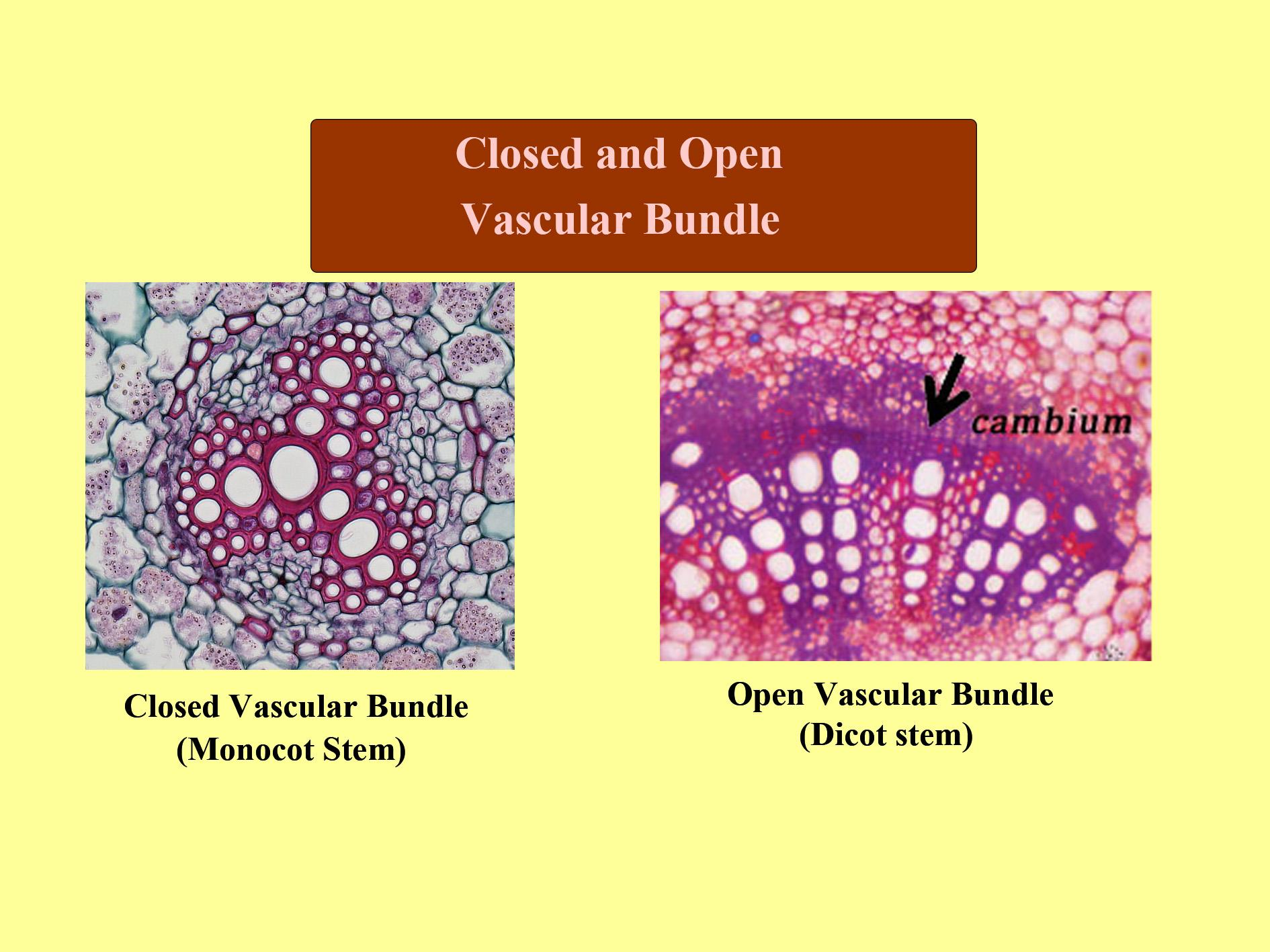
What do you mean by a closed vascular bundle?
(a)Presence of cambium
(b)Absence of cambium
(c)Presence of periderm
(d)None of these
Answer
507.9k+ views
1 likes
Hint: The closed vascular bundles are generally found in the leaves and monocot stem. They are not capable of secondary growth. In monocots, the vascular bundles are the collateral, conjoint, and closed type.
Complete answer:
A closed vascular bundle means that there is an absence of a cambium. They are not capable of forming the secondary xylem and phloem tissues. In monocots, the xylem is found within the inner side while the phloem is present outside and xylem and phloem are arranged side by side within the same radius which aren't separated by the cambium.
Addition information:
The difference between open vascular bundles and closed vascular bundles are-
So, the correct answer is ‘Absence of cambium’.
Note:
A vascular bundle is a portion of the transport system in vascular plants. The transport itself happens in plant tissue, which exists in two forms: xylem and phloem. Both these tissues are present during a vascular bundle, which additionally will include supporting and protective tissues.

Complete answer:
A closed vascular bundle means that there is an absence of a cambium. They are not capable of forming the secondary xylem and phloem tissues. In monocots, the xylem is found within the inner side while the phloem is present outside and xylem and phloem are arranged side by side within the same radius which aren't separated by the cambium.
Addition information:
The difference between open vascular bundles and closed vascular bundles are-
| Open vascular bundles | Closed vascular bundles |
| In open vascular bundles, Cambium is present between the xylem and phloem. | In closed vascular bundles, Cambium is absent. |
| It is capable of forming secondary xylem and phloem tissues. | It is not capable of forming the secondary xylem and phloem tissues. |
| It is found in dicotyledonous plants. | It is found in monocotyledonous plants. |
| It can be collateral and bi-collateral. | It can be collateral or concentric. |
So, the correct answer is ‘Absence of cambium’.
Note:
A vascular bundle is a portion of the transport system in vascular plants. The transport itself happens in plant tissue, which exists in two forms: xylem and phloem. Both these tissues are present during a vascular bundle, which additionally will include supporting and protective tissues.

Latest Vedantu courses for you
Grade 8 | CBSE | SCHOOL | English
Vedantu 8 CBSE Pro Course - (2025-26)
School Full course for CBSE students
₹45,300 per year
Recently Updated Pages
Master Class 11 Economics: Engaging Questions & Answers for Success

Master Class 11 Business Studies: Engaging Questions & Answers for Success

Master Class 11 Accountancy: Engaging Questions & Answers for Success

Master Class 11 English: Engaging Questions & Answers for Success

Master Class 11 Computer Science: Engaging Questions & Answers for Success

Master Class 11 Maths: Engaging Questions & Answers for Success

Trending doubts
Which one is a true fish A Jellyfish B Starfish C Dogfish class 11 biology CBSE

State and prove Bernoullis theorem class 11 physics CBSE

1 ton equals to A 100 kg B 1000 kg C 10 kg D 10000 class 11 physics CBSE

In which part of the body the blood is purified oxygenation class 11 biology CBSE

One Metric ton is equal to kg A 10000 B 1000 C 100 class 11 physics CBSE

Difference Between Prokaryotic Cells and Eukaryotic Cells




